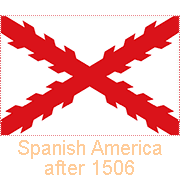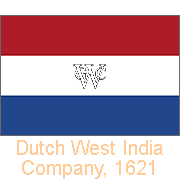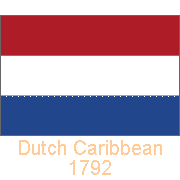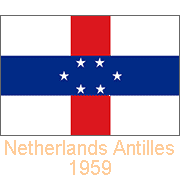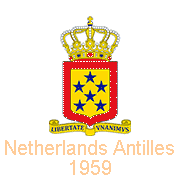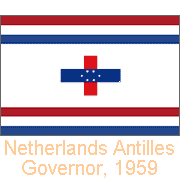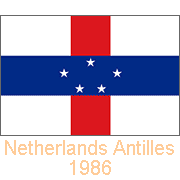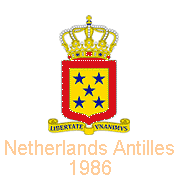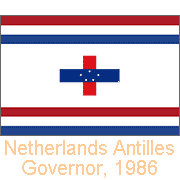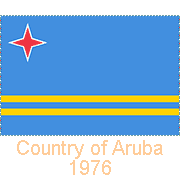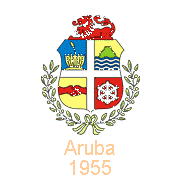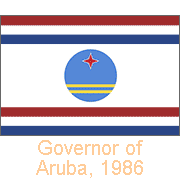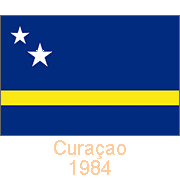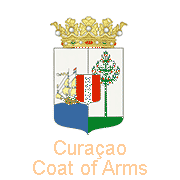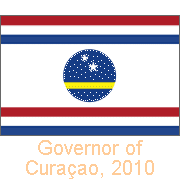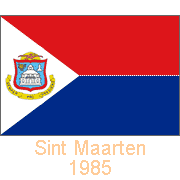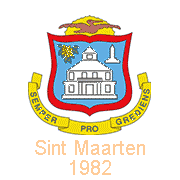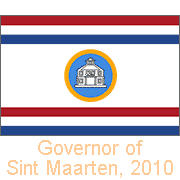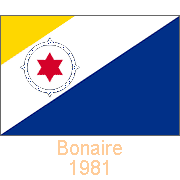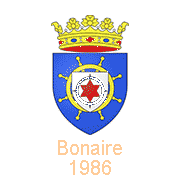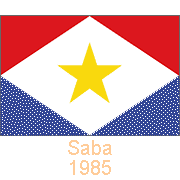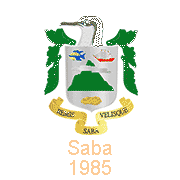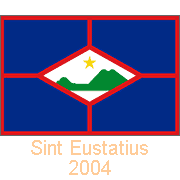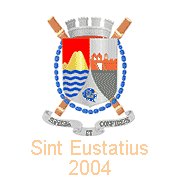Flags from the Dutch Caribbean
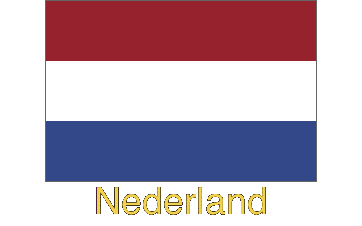
A Flag history of the Dutch Caribbean
In the wake of Christopher Columbus, the Spanish explorers claimed all Caribbean islands as their own in the early 16th century. Their ships were flying as their naval ensign a white flag with, in red, the “Cross of Burgundy” (representing the cross on which Saint Andrew was crucified, two crossed, roughly-pruned knotted branches). The Dutch Chartered West India Company, founded in 1621, started colonisation in the area in 1631 when they constructed Fort Amsterdam on Sint Maarten. The Company’s flag was the red-white-blue tricolour of the Netherlands with the letters GWC (Geoctrooieerde Westindische Compagnie) on the white stripe. When the Company went defunct in 1792, the flag of the Netherlands was used to signal colonial possession, right until the mid-20th century.
you may then send it as a postcard if you wish.
In 1948 the six Dutch Caribbean islands were renamed the “Netherlands Antilles”, and in 1959 a flag was adopted: white, with a horizontal blue stripe on a vertical red band of the same width. In the centre of the blue stripe are six white, five-pointed stars, representing the six main islands of Aruba, Bonaire, Curaçao, Saba, Sint Eustatius, and Sint Maarten. In 1986 Aruba seceded, so the flag and coat of arms lost a star.
Aruba had already adopted a flag of its own in 1976, light blue with a red star and two yellow stripes, and this remained its national flag when it became autonomous. Curaçao also adopted its flag, blue with two stars of unequal size and a yellow bar, in 1984. A year later, Sint Maarten also adopted its flag: red over blue with a white triangle and its coat of arms. All three of these islands became autonomous countries in the Kingdom of the Netherlands.
Bonaire had already adopted its flag in 1981, a flag divided diagonally yellow-white-blue, the latter taking up half of the flag’s total area. The white band depicted a black compass and a red six-pointed star. Four years later, Saba also adopted its flag, red over blue with a white diamond shape over it, its points touching all four sides and a yellow five-pointed star in the centre. Finally, Sint Eustatius adopted its flag in 2004: four five-sided blue fields, outlined in red, a white diamond field in the centre with, in green, a silhouette of the island and a five-pointed yellow star.
Most of these flags were the result of competitions held on the islands. All islands also adopted coats of arms, their designs symbolising what is important to the people living there.


